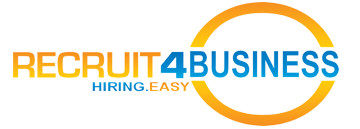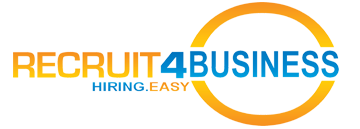WHAT DOES A RECRUITER LOOK ON A RESUME

Have you ever wondered what recruiters look for on a resume? Companies have limited time to recruit for positions that they need filled. On average, recruiters spend up to six seconds scanning a resume, looking for specific things to answer their main questions. That is not a lot of time! Knowing what to put on your resume to make you stand out would put you ahead of the large applicant pool. We asked our Recruiting Coach Marnie and she shared the top five must haves for putting together a resume.
- Your work history. Your resume is in essence the history of your work experience, skills, abilities, and education. Recruiters primarily want to know about your longevity and dependability in positions. These traits should be easy to see on your resume. Marnie says that the first thing recruiters are looking at is a proper sequence of employment. They do not have much time to spend so your jobs should be listed in reverse chronological order. This means that the job you have now, or your most recent job should be the first thing the recruiter sees. Do not list your oldest job first. This will cause them to have to fish through your resume to find your most recent position. You also want to include the name of each company and the month and year you started and ended. If it is the position that you are working at now, then you would put your starting date and “current” or “still employed” for ending date. Also bullet points should include the content of what you did at each job. These points include the duties you did every day. In addition, do not just include what you did at the company, but also include what you did for the company. Your achievements should be included. For example, a salesperson should list what their gross sales were, their growth percentages, if they brought in a specific amount of new accounts, etc. If you were in accounting, for instance, you need to be specific. Did you do job costing, accounts receivable, accounts payable, processed on average 40 invoices a day? Be sure to also use key words found in the job ad as you write your work history.
- Contact information. Your contact information should be at the top center or on the top left of your resume. Your name as it is stated on your driver license should be on your resume. If you go by a nickname, you can put that in parentheses as well. Marnie said that she cannot tell us how many resumes she sees every day that do not include full names or contain a number that is disconnected. It is also important not to use your current work email as your email address. Your email address should be professional as well; hotmama69@hotmail.com is not a professional email address handle. An inappropriate email address can cause you to not be selected to move forward. In addition, check your junk folder frequently if you are actively looking for a job. Remember to use a good working number with a voicemail that has been set up and avoid using your current work number.
- Skills. Marnie indicated that she prefers a skill section over a professional summary. She said that professional summaries have a lot of fluffy information. A professional summary that says “I followed company procedures and provided customer service to the best of my ability” does not indicate much about your actual skills. Indicate what your hard skills are with a few of your soft skills and certifications. I.e. if you are an HVAC Service Tech then you would indicate that you have your EPA, if you are an Electrician include your license, if you are an Accountant include your degree, software programs used, and skills such as AR, AP, job costing, etc. If you have the skills required for the job, make sure it is highlighted and it is on your resume right at the top in your skill section next to your soft skills. Soft skills include skills such as communication, public speaking, teamwork, problem solving, active listening, etc. These are things that cannot necessarily be taught, but that you personally bring to the table for the job. Do not put a hard skill or a soft skill on your resume that you are not a hundred percent comfortable and confident in. These are things that you are highlighting that you are proud of, not things you want to be. You might be asked about them in an interview.
- Education. In most cases experience trumps education so do not worry if you do not have a college degree. That said, your high school diploma should only be listed if you graduated high school within the last five years. However, if you went to a trade/high school or you did two years of college credits in high school to obtain your AA degree you may include it as you obtained a focused degree or certification program. If you have a degree and went to a two or four year university be sure to include the name of the university, what your degree was in, and when you graduated. If you did not complete the program be sure to indicate that it was not finished.
- Address gap and work history. If you took time off work for school or to take care of a family member it is helpful if you indicate your reason for a gap in your experience. Also, include odd jobs that you may have had during those times. If you took on a temporary job while searching for a new one, indicate that as those skills may be transferrable. Again, indicate the name of the company and the start and end dates.
We hope that these tips were helpful! Good luck on your job search!


